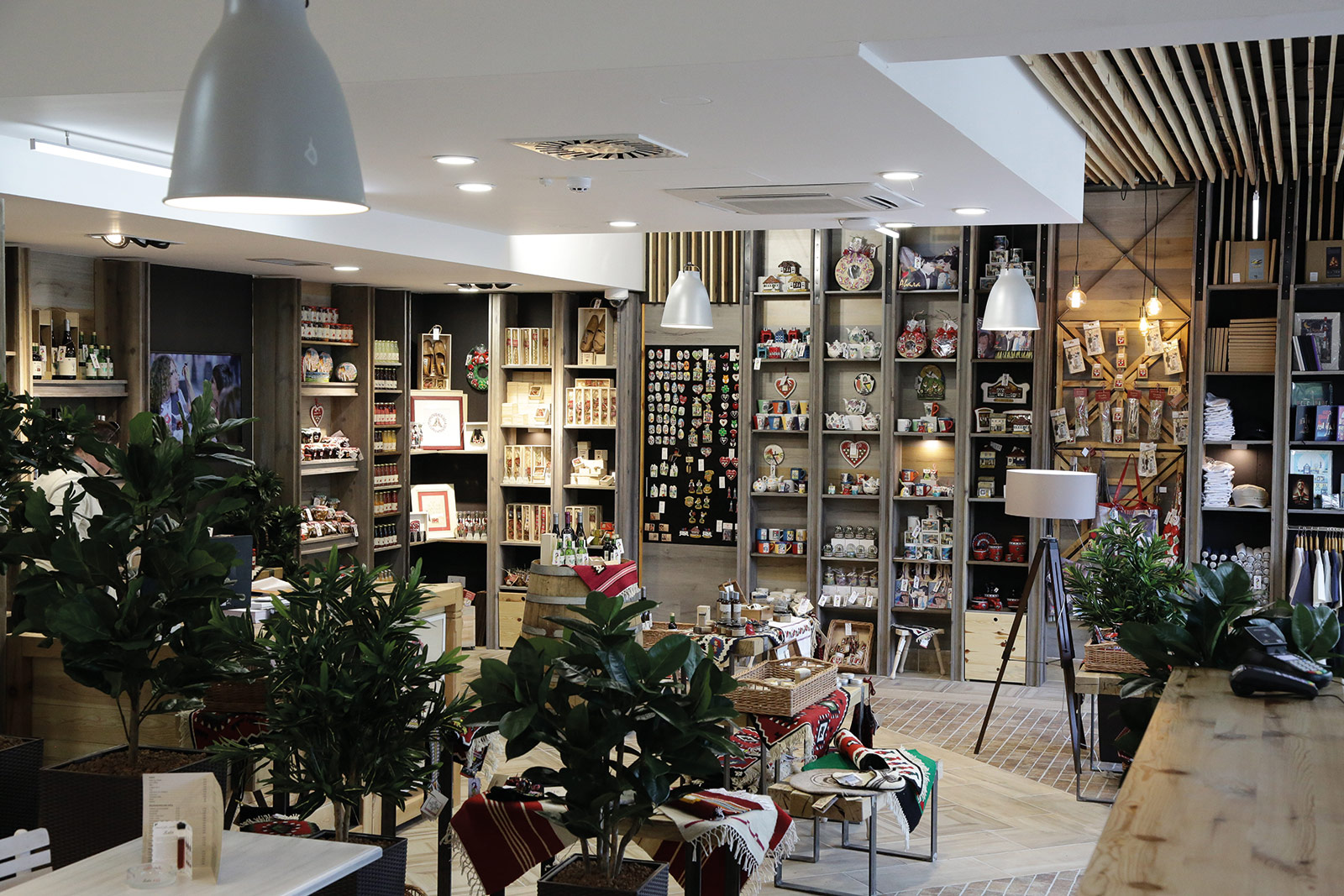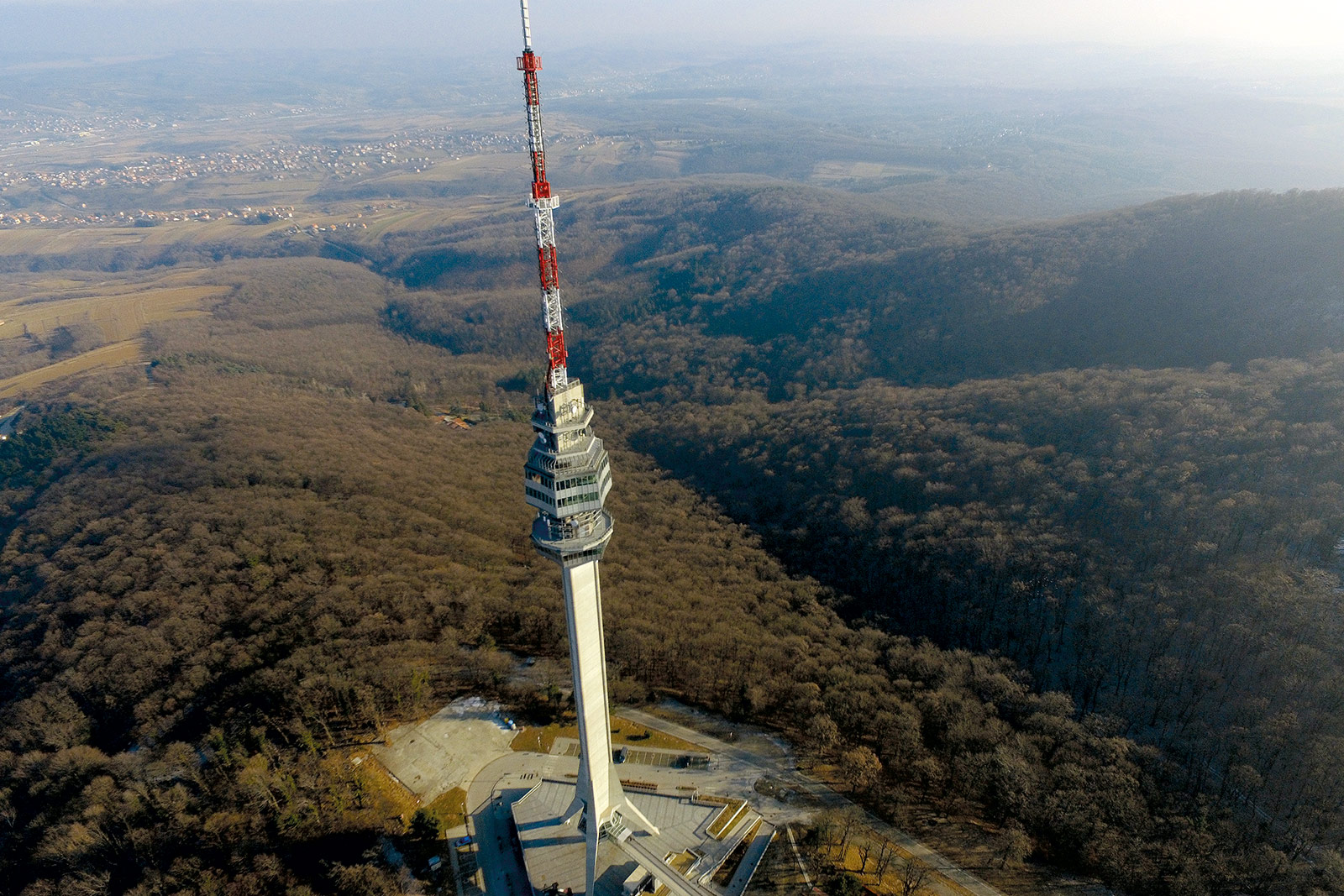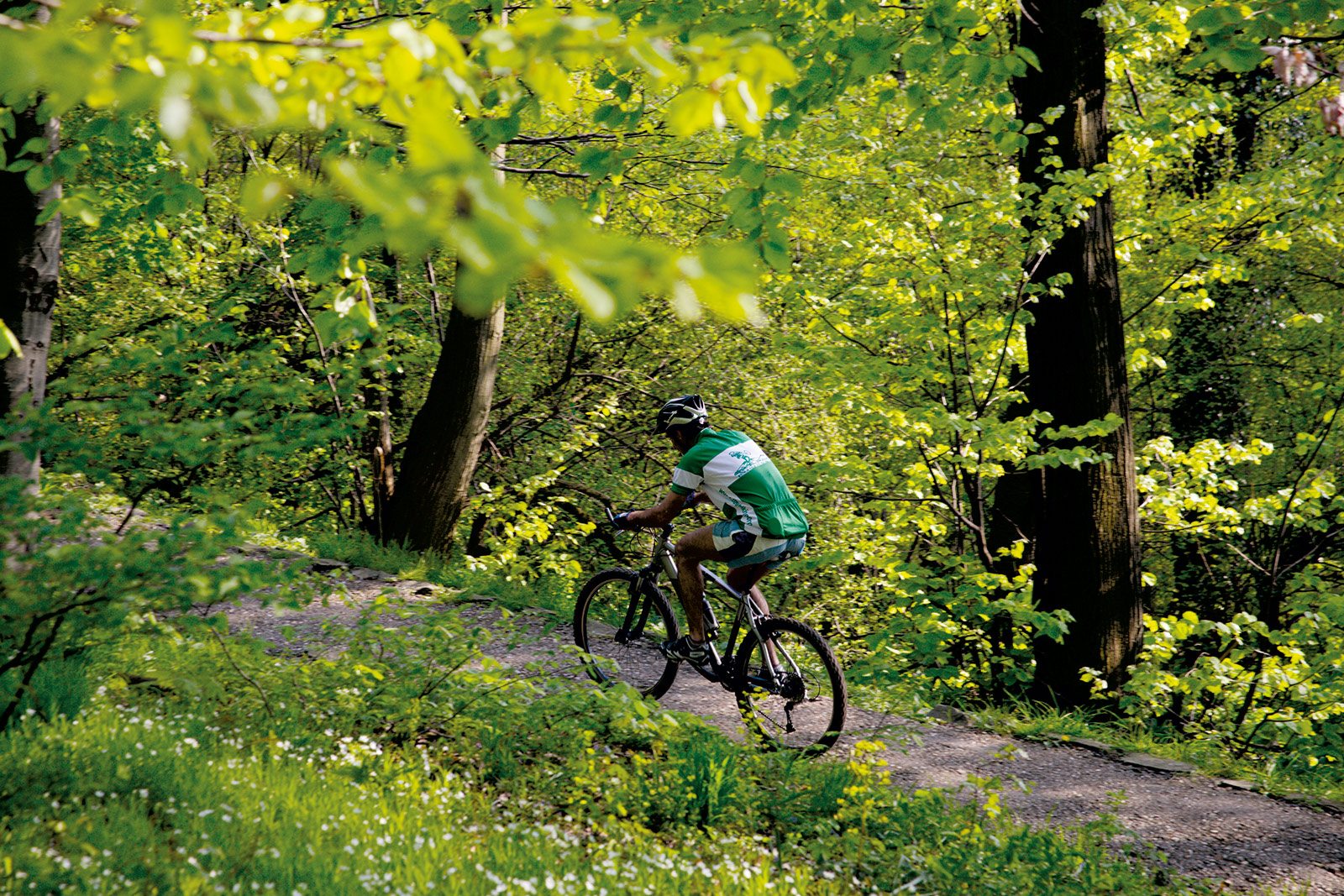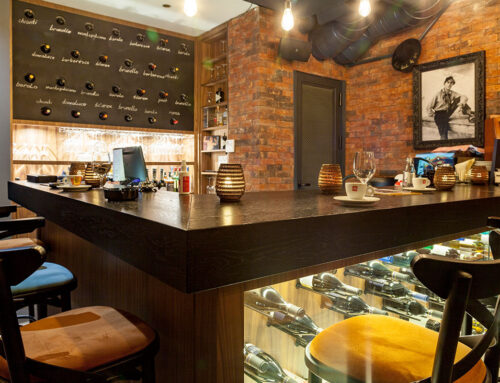Novi sadržaji Avalskog tornja
Najlepši i najznačajniji telekomunikacioni toranj Srbije spada među pet najposećenijih turističkih atrakcija grada. Pored jedinstvenog panoramskog pogleda, turiste i izletnike očekuju i raznoliki sadržaji novootvorenog kompleksa: bogata suvenirnica autentičnih srpskih proizvoda, sportska i dečja igrališta, kafe, restoran, fitnis centar na otvorenom, etno prodavnica…
Avalski toranj na istoimenoj planini simbol je i kapija Beograda. Novi toranj izgrađen je 2010. godine i replika je starog koji je srušen u NATO bombardovanju 1999. godine. Pravo je zadovoljstvo popeti se jednim od dva lifta na vrh ove najviše građevine na Balkanu i sa vidikovca ili iz kafe-bara Panorama posmatrati grad i njegovu okolinu. Jedno od upečatljivih svedočanstava o lepoti pogleda sa vrha Avale ostavio je poznati beogradski književnik Duško Radović: „Nauživajmo se, napasimo oči na toj lepoti. Oni bregovi i lugovi na jugu – to je Šumadija. A ona zeleno-žuta beskrajna ravan, preko reke – to je Vojvodina, naša žitnica. Želite li sve to da vidite još jednom i još dalje, onda ćemo se uspeti na veliki televizijski toranj… Odavde se vidi, tamo na zapadu, Mačva. A ona bela traka što krivuda – Morava, na istoku. Na jug – možemo gledati sve do planine Rudnika. Na severu je Srem. Dole – Beograd! Gore – nebo!”
Uz nezaboravan pogled, šumovite pejsaže, svež vazduh i spomeničko nasleđe koji su i do sada bili glavni motivi za posetu Avali, novi turistički kompleks nudi paletu sadržaja kojima možete ispuniti celodnevni izlet: deca se mogu igrati na savremeno uređenom igralištu, odrasli mogu koristiti sportske terene i fitness centar okužen negovanim zelenilom, osveženja i hranu nudi kafe Avala i novi restoran. Znatiželjnicima preporučujemo da obiđu i jedinstvenu muzejsku postavku na kojoj je prikazana istorija preduzeća „Emisione tehnike i veza”, istorija domaće radiodifuzije i svetska otkrića u oblasti telekomunikacija.
U parku prirode i istorije
Obeležene planinarske staze idealne su za šetnju u koju možete krenuti samostalno ili se odlučiti za pešačke ture u organizaciji Planinarsko-smučarskog kluba Avala. Na planinarenje i šetnje ne morate obavezno da nositi vodu jer se na Avali nalazi čak osam izvora. Napoznatiji izvor je Ledinac gde se, kako samo ime kaže, možete okrepiti zdravom, ledenom vodom. Uz pratnju vodiča, možete saznati i niz zanimlivosti iz milenejumske istorije ovog prostora: na južnoj padini nalazi se rudnik žive Šuplja stena, koji je po mišljenju pojedinih arheologa, jedan od najstarijih u Evropi i potiče iz 7. veka p.n.e., iz epohe slavne vinčanske kulture. Rudarstvo je cvetalo i u vreme Rimljana – iz rudnika Crveni breg u današnjem naselju Ripanj, u kome i dan-danas postoje drevna rudarska okna, vađeni su olovo i cink, a uz njih srebro i zlato. Najstarije utvrđenje na vrhu Avale podigli su Rimljani kako bi čuvali prilaz Singidunumu i štitili rudnike. Sloveni su u ranom srednjem veku na istom mestu podigli svoje utvrđeno naselje Žrnov. Sa padom Beograda u ruke Osmanilija, Žrnov gubi svoj strateški značaj. Dobro očuvani ostaci utvrđenog grada su 1934. godine dignuti u vazduh da bi se na njegovom mestu podigao spomenik Neznanom junaku – jedan od simbola Avale.
Spomen ratnicima i ujedinjenu Južnih Slovena
Gradnju ovog monumentalnog zdanja inicirao je je kralj Aleksandar I Karađorđević. Spomenik je memorijal žrtvama Prvog svetskog rata i Balkanskih ratova i izgrađen je na mestu na kome su stanovnici okolnih sela podigli spomenik na grobu nepoznatog palog ratnika iz Prvog svetskog rata.
Kompleks je podignut po nacrtima najvećeg vajara Kraljevine Jugoslavije Ivana Meštrovića. Građevina je projektovana u neoklasičnom stilu u formi grčkog hrama, a kao inspiracija poslužila je grobnicu Kira II u Pasargadu u Persiji. Grob je okružen stubovima – karijatidama. Tih osam skulptura u narodnim nošnjama simbolizuju majke vojnika, narode i regije Jugoslavije. Pradstavljene su Bosanka, Crnogorka, Dalmatinka, Hrvatica, Slovenka, Vojvođanka, Srbijanka i Makedonka.
Od spomenika koje možete videte na Avali vredno je pomenuti Spomenik sovjetskim vojnim veteranima, koji obeležava mesto udesa aviona u kojem se nalazila sovjetska delegacija na čelu sa maršalom Birjuzovim, koja je učestvovala u borbama za oslobođenje Beograda oktobra 1944. godine. U blizini Planinarskog doma Čarapićev brest privućiće vas dva spomenika posvećena Karađorđevom vojvodi Vasi Čarapiću: u bronzi, rad vajara Dušana Nikolića i u drvetu, sa prizorima iz Prvog srpskog ustanka, rad narodnog vajara Bogosava Živkovića. U neposrednoj blizini Tornja nalazi i nova crkva brvnara u srpsko-vizantijskom stilu posvećena despotu Stefanu Lazareviću.
Izlog narodne radinosti
Suvenirinica u podnožju Avalskog tornja jedinstvena je po svom konceptu – u njoj su izložene lepe sitnice koje će vas podsetiti na posetu Avali, ali i autentični, birani proizvodi koji reprezentuju raznolike krajeve Srbije. Razgovarali sa Natašom Drulović, menadžerom prodaje Turističke organizacije Srbije koja je vodila projekat od ideje do realizacije: „Osmišljavajući sadržaje suvenirnice, želeli smo da ona bude reprezentativan izložbeno-prodajni prostor najboljih proizvoda iz Srbije. Proizvođačima suvenira postavili smo zadatak da kreativno osmisle predmete koji odražavaju autentičnost krajeva iz kojih potiču, da zadovolje visoke standarde kvaliteta i da budu napravljeni od prirodnih materijala. Ponosna sam što se danas ovde nalazi izbor najlepših suvenira iz čitave Srbije, gde posetioci mogu da kupe prostirke od vune, predmete od keramike i stakla, odabrana srpska vina, rakije, lepo upakovane džemove, slatka, majice, magneti, razne ljupke sitnice.“
Birane uspomene
Među unikatnim predmetima na policama, pažnju privlače šarene srpske tkanice koje se nose kao pojas, ali mogu biti i dekorativni predmet za kuću. Izložene su i prostirke sa motivima pirotskog i sjeničkog ćilima, maštovite dvopređne čarapa iz knjaževačog kraja, rafinirani peškiri u zlatovezu, ručno pletene rukavce… Većina ovih rukotvorina delo je žena okupljenih u Etno mreži – nacionalnoj strukovnoj organizaciji koje se bave proizvodnjom tradicionalnih rukotvorina u cilju očuvanja starih i zaboravljenih tehnika izrade i osposobljavanja žena za tržišnu proizvodnju.
U radnji je izloženo na stotine proizvoda koji mogu postati vaša draga uspomena. Iz ovog obilja izdvajamo bajkovite vojvođanke kućice, seljake, trubače i tamburaše koje pravi Keramika Ras – porodična manufaktura iz Sremskih Karlovaca. Pažnju privlači i ručno oslikana grnčarija Karoline Petrović, sa motivima pirotskog ćilima. Izuzetno su atraktivni i magneti, šolje, zvona i posude koje proizvodi Atelje Ravno iz Pančeva. Za ljude koji vole savremeni dizajn, otvoren je i kutak u kojem su izložene majice Dechkotzar-a, koje nose potpis poznatih beogradskih dizajera.
Magija sjeničkog ćilima
Pored glasovitog pirotskog ćilima, u suvenirnici se mogu kupiti i prostirke s motivima malo poznatog sjeničkog ćilima koji ima dva identična lica, pa se sa jedne strane može koristiti 50 godina, a sa druge još 50. Izrađuje se na vertikalnom razboju od fine, tanke vune. Izrada ćilima izuzetno je spora, a tkalje, razbirajaću niti bez skica i šablona, stvaraju maguju raskošnih đulova i maštovitih šara.


















Social Network